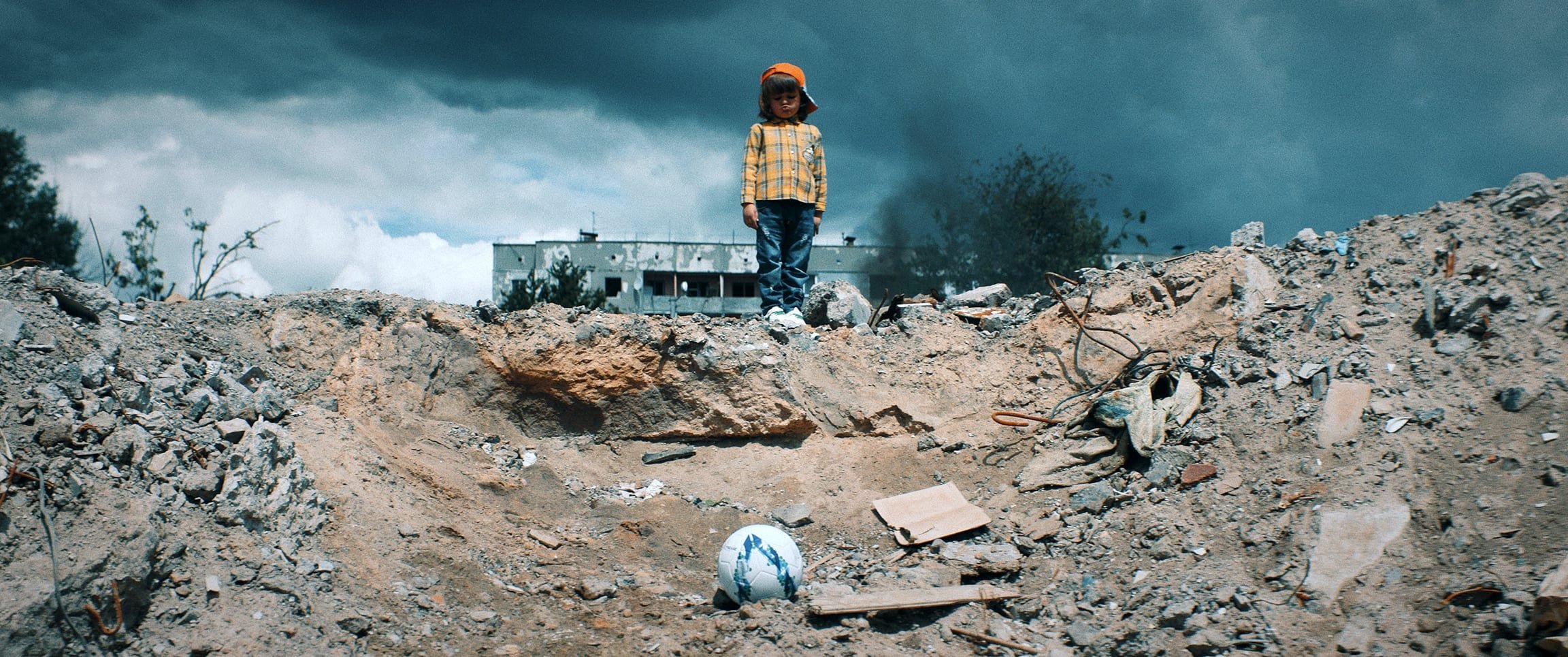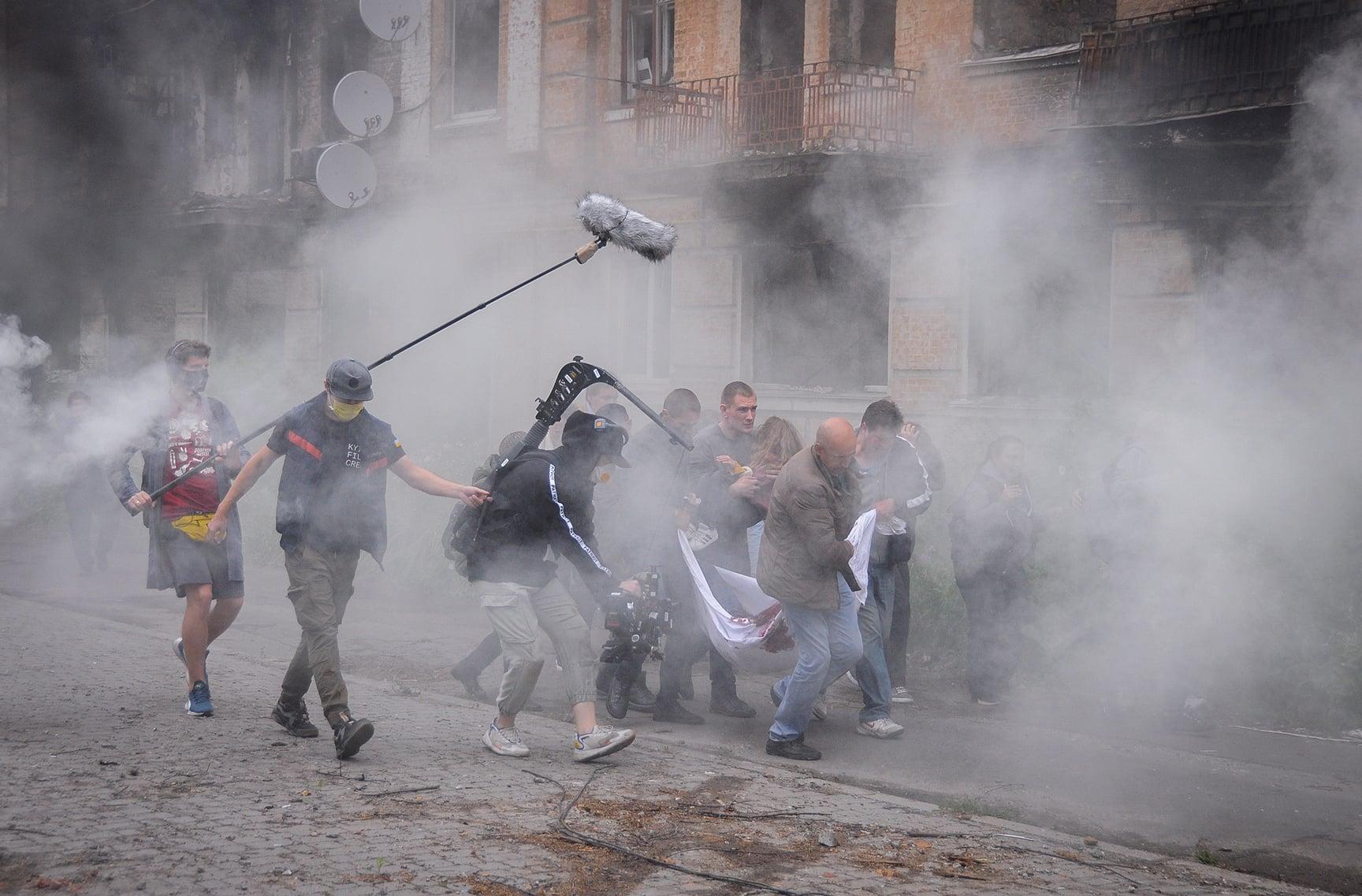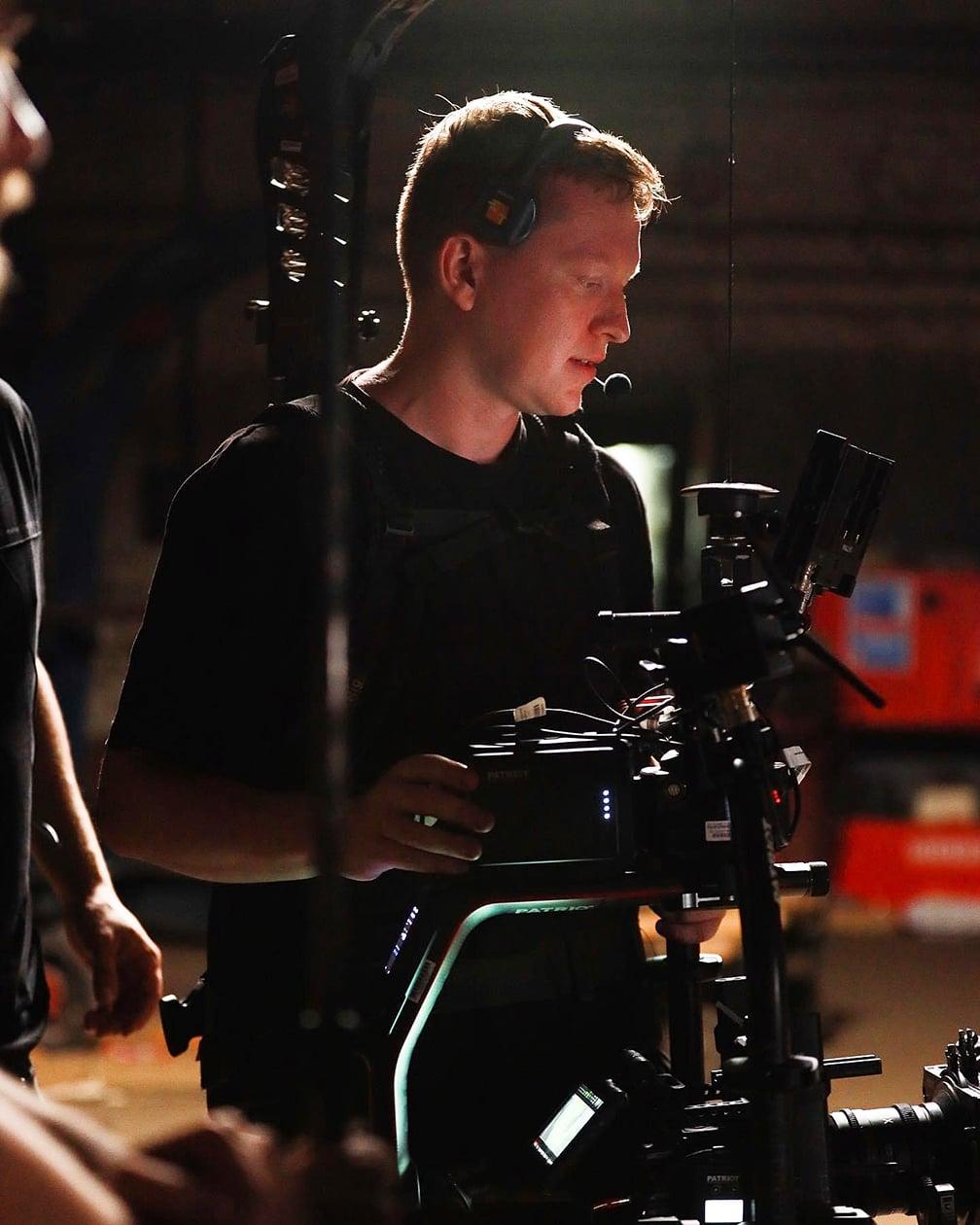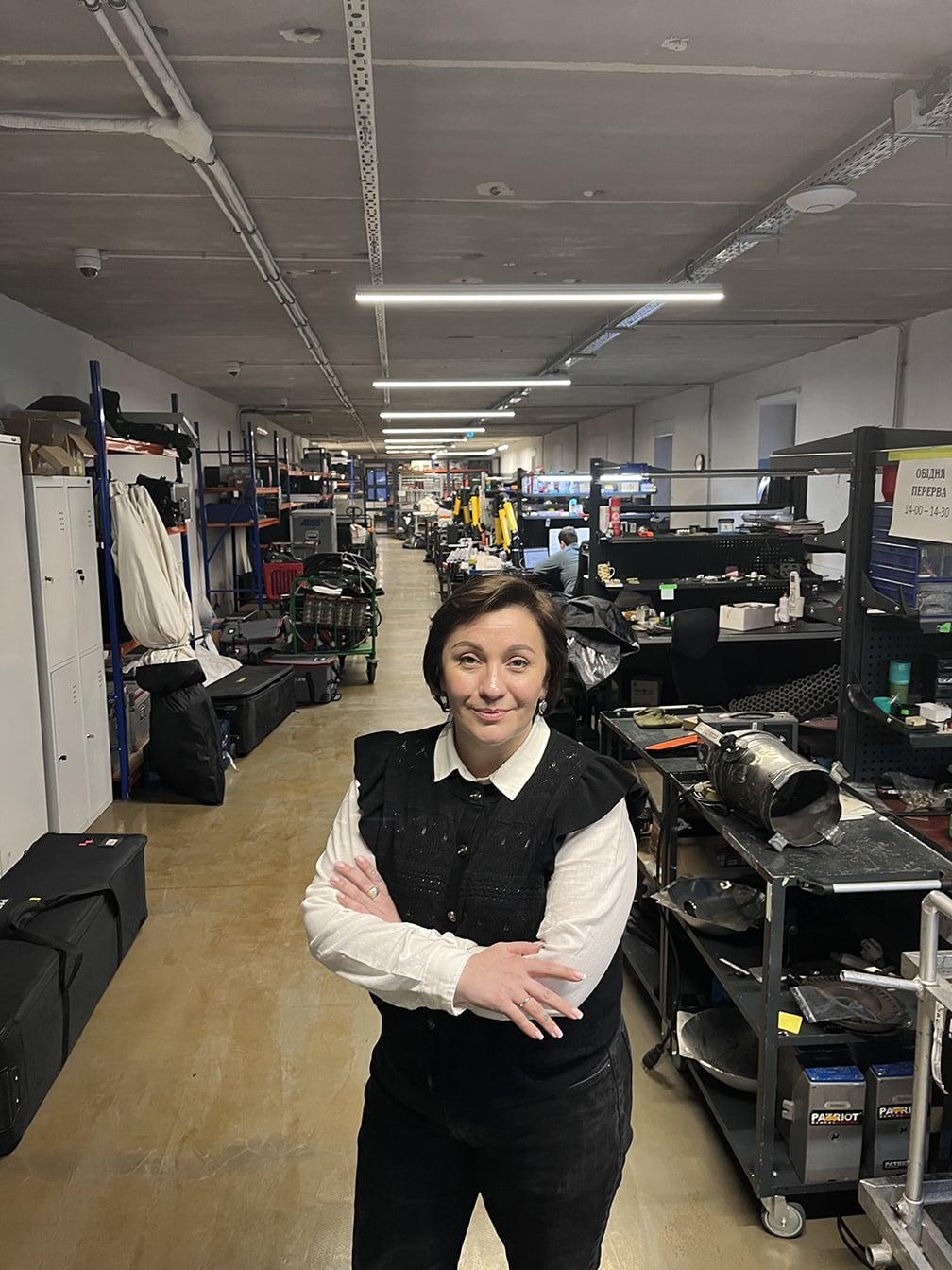
Filmmaking in Ukraine
Members of the Ukrainian cinematography community assess their current circumstances during an AC visit to Kyiv.
Evgeniy Usanov was shooting a TV commercial near a gas station north of Kyiv when the air-raid sirens went off in the fall of 2022. The 31-year-old cinematographer was torn: Run for shelter or keep filming?
It was not the first time he had experienced this dilemma. Since February 2022, Russia had been firing missiles almost daily against civilian targets across Ukraine. Nobody really knew when or where they were safe.
It was already dark, and some of the crewmembers were getting nervous. “We still had a lot to shoot,” Usanov says. “The curfew was coming up. Some pro-ductions stop, some keep going. You have a 12- to 14-hour shoot, you have to end by 8 p.m. to get home before the curfew. You have a limited budget — you can’t stop.”
Usanov took a break with his art director. “We go outside to smoke a cigarette, and then we see two rockets flying above us.” The rockets exploded a couple of streets away, at which point the entire production headed for the shelters.
“When I work, I forget for a time about the war, and I live my precious life.”
— Evgeniy Usanov

Calculated Risks
Life for working cinematographers in Ukraine — as for most Ukrainians — is not easy these days. It’s a series of calculated risks, diminished opportunities and shrinking resources in a country that is fighting for its survival. Many have fled the country. But many more stay, determined not to give in to Russian aggression — and, in the case of cinematographers, seek ways to continue shooting under a series of new restraints.
“The war has taught me how to work with very limited budgets, how to work with a small crew, and how to shoot with almost no lights,” says Usanov. “What the war gives to me: I am not afraid of any star, I don’t care who comes on my set …. What I am afraid of is to be late getting home. I am afraid for my family.”


Before the war, Usanov, who got his start on the Ukrainian version of the TV show The Biggest Loser, had shot several feature films, including 2016’s Sui Caedere, which won a platinum award at the Houston Cinema Arts Festival. His career was taking off. Today, he shoots mostly commercials for domestic TV and public-service videos for the government to rally support for the war effort.

A Once-Thriving Industry
Before 2022, Ukraine had a flourishing film industry. The large stages built during the Soviet era (for propaganda films), a range of experienced crew, and a very low-cost structure compared to the rest of Europe attracted many foreign productions to shoot in Kyiv. The city’s principal rental facility, Patriot, was the biggest equipment-rental business in the region and served a wide market from the Baltic states across all of Eastern Europe right up to Germany. But on a walk through their extensive warehouse on the outskirts of Kyiv one recent afternoon, Anna Ustenko, Patriot’s human-resources director, pointed at shelf after shelf full of unused Alexa Minis, Sony FX6s and Red cameras, as well as lights, lenses and other equipment. Dozens of trucks bearing the Patriot logo stood idle in the parking lot.

“All of this is waiting for the end of the war,” Ustenko says, wistfully. Patriot, founded 25 years ago, had 1,200 technical staff, 300 office employees and 200 truck drivers before the war. Now, more than half are serving as soldiers on the front line. A number have already been killed.
Business has gone down by 80 percent, Ustenko says. More than half of Patri-ot’s business before the war was for foreign clients. That has disappeared completely. “We are trying to sell off the higher-end cameras,” she says. “Some of the smaller cameras went to the soldiers for military use, and a lot of our generators went to hospitals” — to kick in when the electric grid was hit by Russian missiles.
The Next Generation
Everyone has to make compromises. Borya Borysov is a 23-year-old aspiring cinematographer who has been picking up work on commercials and music videos, replacing more experienced cinematographers who have been drafted into the army. On one recent project, Boraya worked with a grip who had been badly injured in the war. He brought along a friend whom he told what to do around the set.

Borysov, who started out as a camera assistant, says one of his lifelines to the outside world is this magazine. “I think American Cinematographer is the best resource for knowledge about cinematography. I found it from Instagram videos.”
As for the future, after the war, Borysov sees two ways forward. “I can stay in Ukraine and continue to create something here, or maybe move to Europe for bigger opportunities, maybe in Germany. At the moment, I don’t have the answer to that question — it is very hard. I love Ukraine, I love Kyiv, but if I want to do something bigger, maybe I have to leave.”
“Our Factory Is Our People”
One Ukrainian company determined not to leave is Filmotechnic, which makes the original Russian Arm — renamed the U-Crane following the 2022 invasion. Founded by Anatoliy Kokush, who has won two Academy Scientific and Engineering Awards for his innovative cranes, Filmotechnic sits in the northern suburbs of Kyiv. Production at the factory is now 40 percent of what it was before the war, and the staff has dropped from 200 to 100. But Denis Kokush, Anatoliy’s son, says Filmotechnic is determined to continue and has resisted suggestions from its partners to relocate manufacturing to Poland. “We never considered [moving] our factory from Ukraine,” he says. “Our factory is our people.”
Student Life
One morning, as our taxi crosses Kyiv to reach the cinematography department of the Kyiv National University of Culture and the Arts, the air-raid sirens go off — loud enough to be heard even in a moving car. By the time we reach the campus, all of the students are in the basement shelters; schools and colleges are required to send students into shelters during the frequent alerts. They sit huddled in small groups underground — some are listening to professors giving impromptu talks, and others are just hanging out, waiting for the all-clear.
“It is much harder to study with the war — it is very distracting,” says Vitaliy Zaporozhchenko, who runs the cinematography program, with 40 students currently enrolled. “When the war is over, the film industry will take off, but until then, nothing much will happen.”
Searching for Nika
With the air-raid alert still active, Daniil Dedkov calls to say we should meet in an underground restaurant near Maidan Nezalezhnosti, Kyiv’s central square, because it was still open; many restaurants above ground close as soon as the sirens go off. Dedkov got his start as a teenager shooting video for a friend to advertise his clothing store, and later partnered with a young director, Stanislav Kapralov, with whom he shot the film Let It Snow with some American actors in neighboring Georgia during 2019. The film was bought by Lionsgate. “We made some money from that. In the years before the war, there were a lot of projects in Ukraine, a lot of foreign investment. Then the war came. We felt our careers were stopped. Many people ran away from Kyiv.”

Dedkov didn’t want to leave. He and Kapralov began talking about what they could shoot during the war that would have some meaning. At that time, Kapralov was searching for his dog Nika, who had run away during the initial days of the Russian attacks. The filmmakers decided to shoot a documentary, Searching for Nika, about Kapralov’s missing dog and the many animals that had been abandoned by their owners or killed by the Russians, particularly around the north of Kyiv, where some of the worst war crimes were committed. They took a Blackmagic 6K camera and discovered a lot of suffering animals — horses, zoo animals, an ostrich farm, starved cattle trapped in their pens. They even came across a lion that they helped ship out to Poland. Kapralov says, “The goal of the film was to show the world what the Russian soldiers are doing to Ukraine.”


Searching for Nika premiered in the U.S. at the Doc NYC festival in New York in November 2023. Dedkov now has two projects underway: Soldiers, a 38-minute film about a soldier with a shrapnel injury who develops extra-sensory powers, and One Big Family, a four-part series about families who initially supported Russia but changed their minds after the war started.
“You Need to Laugh”
Over dinner one night in a Kyiv restaurant, Usanov, the cinematographer who saw the missiles flying overhead, talks about how he had just finished shooting a commercial in Kyiv on a 40'x20' OSVP LED volume with Unreal Engine. It was for an online-gambling site, and it showed a Ukrainian guard with horns at the gates of Hell telling a line of Russians, “We have been waiting for you!”
“The ads are funny and sarcastic,” says Usanov. “You need to laugh when you are living through this hell. You need to keep your mental health. When I work, I forget for a time about the war, and I live my precious life.”
In a related story, the author spoke to director Daniel Roher and cinematographer Niki Waltl, AAC about shooting the intriguing — and disturbing — documentary Navalny, about Russian political activist Alexei Navalny, who has since died in prison.






